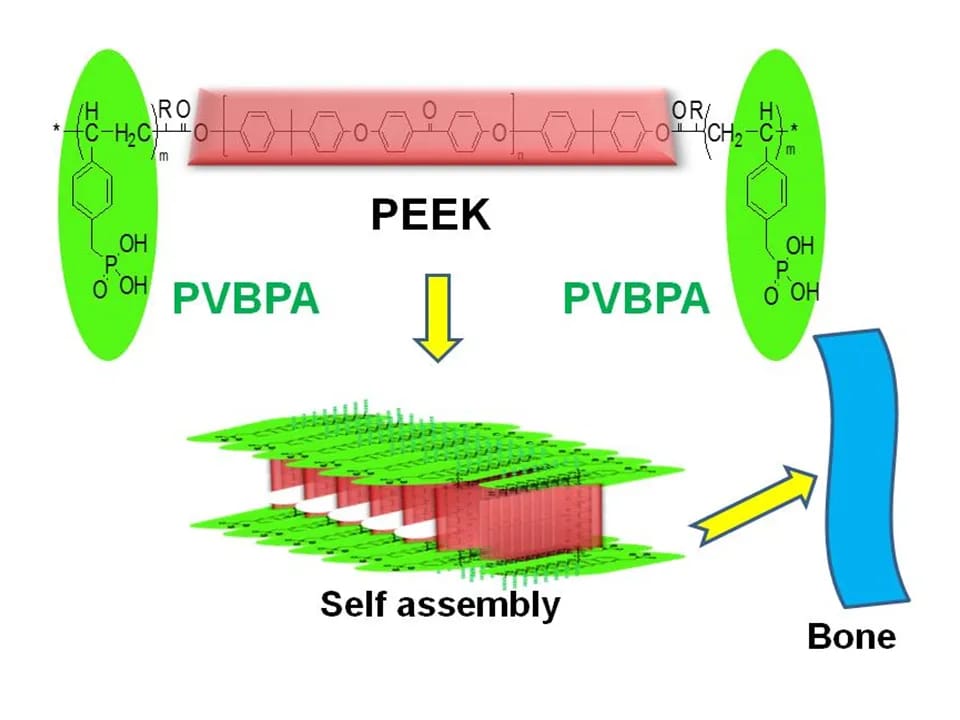Self Assemblies of Poly(ether ether ketone) Block Copolymers for Biomedical Applications
Polymers or plastics have become an essential component of human civilization. Nowadays, their usage in biomedical applications such as bone implants, drug delivery and sensors are being explored extensively.
In this study, block copolymers based on engineering homopolymer PEEK (poly ether ether ketone) and PVBPA (poly vinyl benzyl phosphonic acid) and their self assemblies were developed and investigated for their biomedical applications. Since these copolymers are amphiphilic in nature i.e. hydrophobic and hydrophilic, their micelles of different size and shapes were created in aqueous media. These micelles or nanoparticles were examined by various imaging techniques such as transmission microscope and atomic force microscope to measure their size and features in nanometers regime. The sub-micrometer roughness of the film of these copolymers was established with their efficient adhesion with the living cells or tissue when used for implant applications.
The relative rigidity of polymer chains caused a stacking in copolymers during self-assembly process as observed by the wide angle X-rays experiments. Such stacking of PEEK chains was possible only at a high temperature. Thermal testing of these polymers has revealed their high temperature stability and thus allowing them to be used under a laser with relevant wave length. These copolymers, in no doubt, can be better candidates as materials for implants due to following features as evidenced by the experiments
1)Their microstructures can be manipulated from nanoparticles to large clusters with pores like domains;
2) They would show a better connectivity with the tissue due to the presence of phosphonic acid groups;
3) Both the blocks in these copolymers are biocompatible,
4) The submicrometer–sized roughness of the copolymers film can improve adhesion and
5) The copolymers assemblies stick to the silicone surface and can disassemble leading to a larger clusters joined together via hydrogen bonds as observed in infrared spectrometer studies.
These block copolymers can be superior to the surface modified PEEK employed for bone implants or dental applications due to 1) easy synthesis and 2) a control over the morphology of copolymer and 3) there is no issue of degree of modification as encountered for PEEK chain modification, and hence the properties of PEEK are largely preserved. The induction of self assemblies in above high performance copolymers and addition of surface binding efficiency via phosphonic acid groups have certainly opened new avenues to explore PEEK based polymers for bone implant applications.
Reference
Kumar, A.*, Self Assemblies of Poly(ether ether ketone) Block Copolymers for Biomedical Applications, ChemistrySelect, 2021, 6. 9060–9068.
